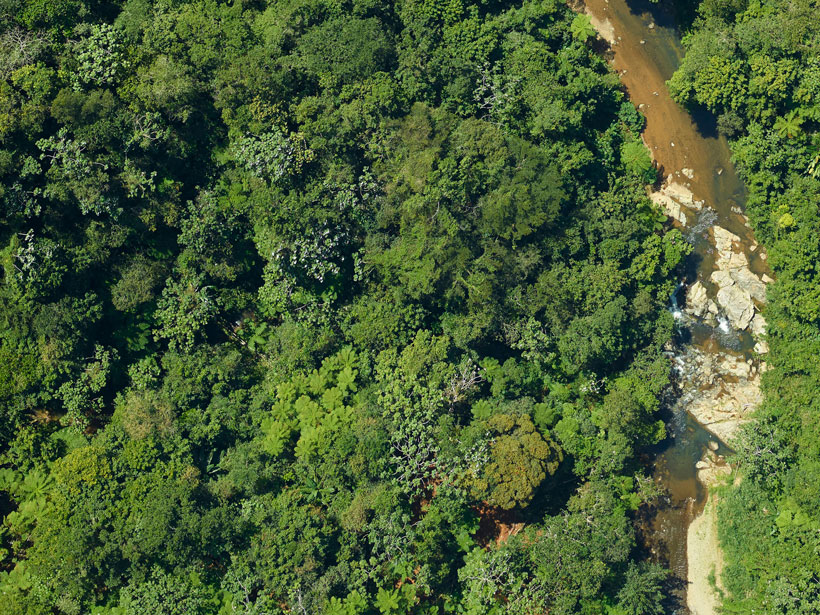Source: Journal of Geophysical Research: Biogeosciences
Plant growth is an important indicator for diagnosing environmental health as well as shifts in climate. Large-scale monitoring of vegetation patterns relies on several proxy measurements derived from satellite observations. Although these proxies all correspond roughly to the amount of plant material observed, each one depends on a different aspect of plant biology.
The normalized difference vegetation index (NDVI) exploits the fact that chlorophyll is highly absorbent of red light (hence plants’ distinctive green color) and highly reflective of near-infrared light. Thus, it acts as a measure of total photosynthesis capability. Another proxy, vegetation optical depth (VOD), gauges water stored within plant matter through the use of microwaves, offering an estimate of total vegetation mass. And solar-induced chlorophyll fluorescence (SIF) measures the light emitted during photosynthesis, making it a proxy for active photosynthesis.
Using data collected from multiple instruments between 2007 and 2015, Wang et al. compare these metrics over the course of the growing season to evaluate how closely they track the yearly cycle. They observe that the three indices indicate similar timing for the start of vegetation growth in a given region. After that, however, the indices begin diverging, such that the timing of the peak SIF signal occurs roughly 10 days before that from NDVI, which in turn is about 10 days before the peak signal from VOD. The end of the growing season indicated by the three proxies varies by more than a month.
These differences appear to be consistent with the biological property traced by each metric. For instance, the end of the season as measured by NDVI lags that of SIF. This lag corresponds to a known reduction in photosynthesis activity that precedes the actual loss of chlorophyll indicated by changing leaf colors. The end of the season indicated by both of those proxies precedes that indicated by VOD, which is sensitive to an overall reduction in plant mass. VOD levels, which depend on the availability of water, also vary on the basis of local climate.
The authors conclude that obtaining a full picture of large-scale plant growth cycles requires considering all three metrics together, and they suggest that the metrics’ relative variation could offer key insights into how plants respond to local climate changes. (Journal of Geophysical Research: Biogeosciences, https://doi.org/10.1029/2020JG005732, 2020)
—Morgan Rehnberg, Science Writer
Citation:
Rehnberg, M. (2020), In vegetation growth studies, what you measure matters, Eos, 101, https://doi.org/10.1029/2020EO147494. Published on 27 July 2020.
Text © 2020. AGU. CC BY-NC-ND 3.0
Except where otherwise noted, images are subject to copyright. Any reuse without express permission from the copyright owner is prohibited.

